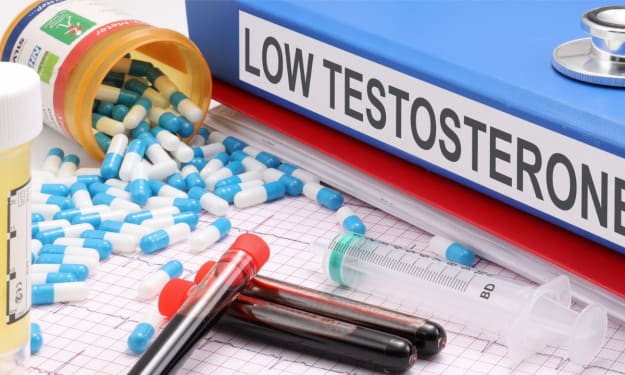Hypogonadism or andropause (low testosterone)
Testosterone Deficiency Syndrome (Hypogonadism)

Low Testosterone: Symptoms, Diagnosis & Treatment
In 1939, the young German biochemist Adolf Butenandt was awarded the Nobel Prize for the discovery of testosterone. The work began as early as 1931 with 15,000 liters of urine from army toilets and continued in 1934 with the participation of 20,000 pig ovaries, until finally in 1935 the scientist obtained a steroid, which was named testosterone. True, Butenandt was forced to refuse the prize, since he was a member of the National Socialist German Workers' Party, and after the end of the Second World War he got only a laureate diploma. And now, for almost 90 years, scientists around the world have been exploring this hormone, discovering more and more of its properties.
Functions of testosterone
Testosterone is an androgen, the main sex hormone in men. It is produced by the Leydig cells located in the testicles from cholesterol under the influence of the hypothalamus and pituitary gland. Testosterone is also present in the female body. It is synthesized by the ovaries and adrenal glands in an amount 10 times less than in men.
First of all, testosterone in men is responsible for puberty and the maintenance of secondary sexual characteristics. The hormone begins to be produced even in utero, the peak concentration is observed by the age of 20, and after 30 its quantity steadily decreases.
Another function of this hormone is male fertility, ensuring the ability to procreate. Leydig cells and Sertoli cells form the spermatogenic epithelium, thereby participating in the formation of spermatozoa. The epithelium is sensitive to the influence of alcohol, chemotherapy drugs and other toxic substances. Chronic intoxication leads to a decrease in testosterone production and impaired spermatogenesis.
The level of testosterone also determines sexual desire (libido). But erectile dysfunction in patients under the age of 50 is usually caused not by androgen deficiency, but by psychological problems.
Testosterone is an anabolic in the male body. It is thanks to him that men have the following external differences from women:
- more developed muscles;
- hair growth in the face, chest, limbs;
- an enlarged larynx (Adam's apple) and, as a result, a lower timbre of the voice.
In addition, testosterone has a positive effect on mood, adds motivation and drive.
Testosterone level
As you know, the amount of testosterone after 30 years decreases naturally. Pathological deficiency or deficiency before this age can be caused by genetic (Klinefelter's Syndrome), autoimmune (Crohn's disease), oncological (brain tumors) or infectious (orchitis) diseases. Among other reasons: cryptorchidism, the use of certain drugs, stress, bad habits.
The consequences of a long-term decrease in androgen are manifested in a decrease in bone strength (osteoporosis), hair loss on the body with their retention on the head, deposition of fat according to the female type (stomach, hips), decreased libido, and infertility.
In the case of hormones, an increase in levels is just as bad as a deficiency, and testosterone is no exception. The most formidable causes of this condition are primary hypergonadism, often caused by tumors of the adrenal glands and testicles, and tumors in the pituitary or hypothalamus.
Androgen-based anabolics taken by athletes also lead to pathological hypergonadism. The body, being largely a self-regulating system, in response to an increase in testosterone levels, triggers a cellular response, converting excess testosterone into estrogen, the female sex hormone. Outwardly, this manifests itself in the form of gynecomastia (an increase in the mammary glands according to the female type) due to the deposition of fat at the chest level.
Cardiovascular pathology is another complication caused by testosterone hypersecretion. The hormone affects the growth of muscles, including the heart. However, such hypertrophy increases the risk of myocardial infarction of coronary heart disease.
Baldness is the result of the conversion of excess testosterone to dihydrotestosterone. Penetrating into the hair follicle, it blocks its blood supply, as a result of which the hair is deprived of nutrition and atrophies.
Laboratory measurement of hormone levels occurs with the help of antibodies. Testosterone is very small, antibodies to it exceed them several times. Therefore, the amount of testosterone is evaluated only in combination with gonadotropins, and the results are evaluated after taking at least two samples.





Comments
There are no comments for this story
Be the first to respond and start the conversation.